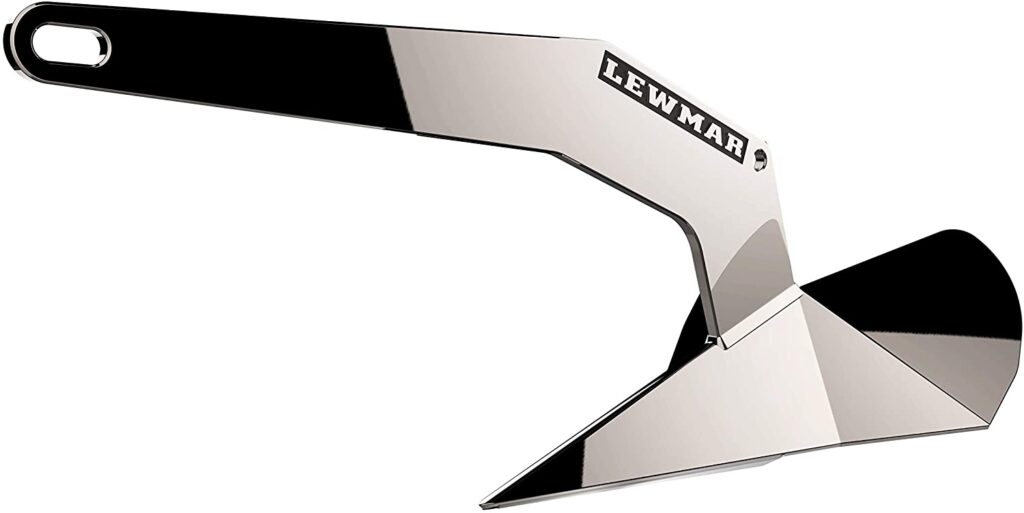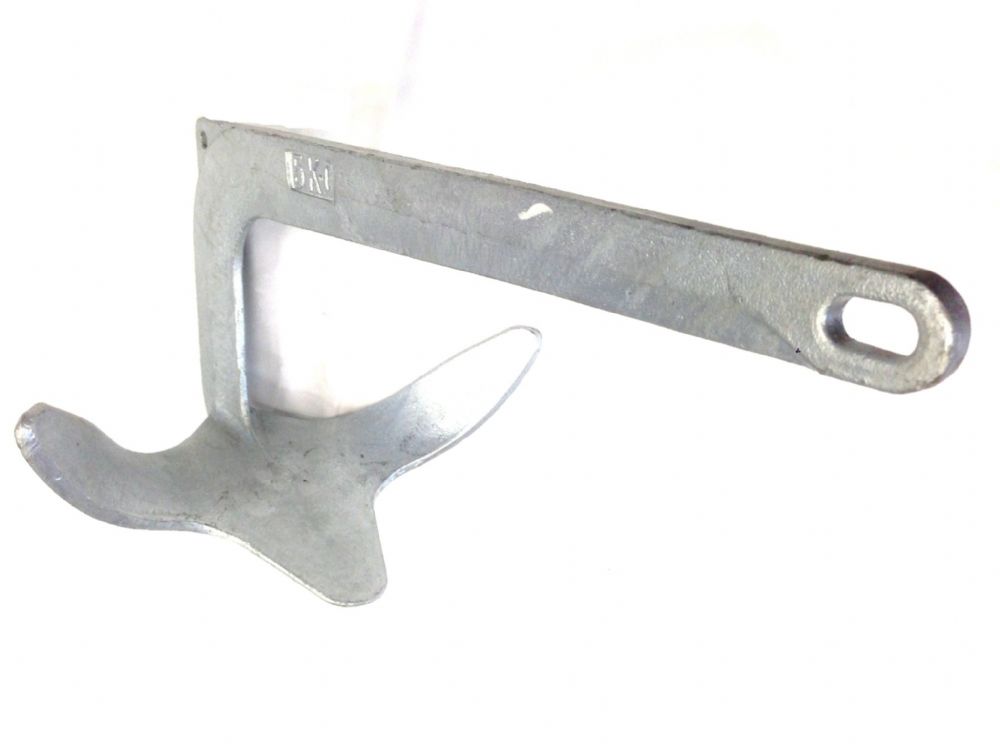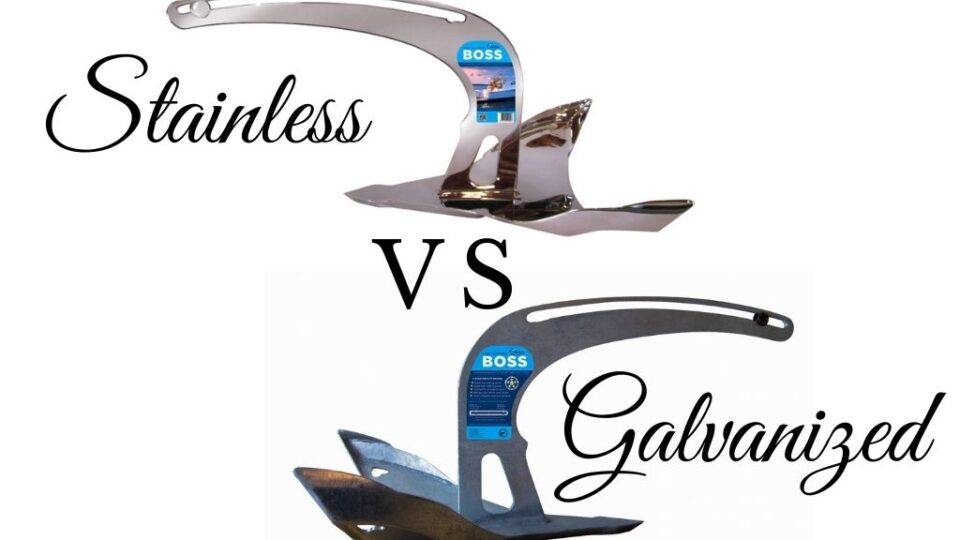Stainless vs Galvanized Anchor
A couple of weeks ago, I went to visit the marina and make sure my boat was ok. To my surprise, my anchor was missing. So, I thought I should immediately go out and get a replacement for my next sailing trip. After visiting the marina store, I thought to myself, should I go with a stainless or a galvanized anchor? I quickly left and went home to research the pros and cons of these types of anchors.
Sailing and boating, in general, are subject to ever-changing elements. Anchors can become unsafe when they aren’t made with the proper materials that will endure time and withstand everything nature has to throw at it. Galvanized and stainless steel are the best options for your anchor against corrosion.
Stainless Steel Anchor
Stainless steel is a very popular metal alloy used to make everything from cooking appliances to car parts and, in our case, boat anchors. The main benefit of using stainless steel anchors is their corrosion durability. While you will have to pay a little more to buy this type of anchor, the trade-ins pay for themselves with durability and longevity. When your anchor is exposed to outdoor conditions, like saltwater, rain, or snow, most metals begin to corrode or rust and start to deteriorate.
However, stainless steel is called stainless for a reason. This particular type of steel is made up of iron, manganese, chromium, silicon, molybdenum, nickel, and only small traces of carbon; because of the composition, rust is virtually undetectable on the steel. Instead of being dipped or coated in a protecting layer, as galvanized steel is, stainless steel has this defense against damage built into it.
This combination of elements forms a film when in contact with oxygen. This film serves as a barrier that inhibits corrosion and shows less wear on the anchor, making the steel stainless. However, because they are nicely polished when you first get them, they scratch easily and quickly lose their shiny look.

Let’s Look At The Pros and Cons of Stainless Anchors
Pros
- Corrosion Durability: It does not rust
- Looks Better: Stainless steel anchors are shiny with their clean and smooth finish and will look 100 times better on the bow of your boat.
- Longevity and Durability: A stainless anchor will last more than galvanized a galvanized one.
- Strength: Stainless steel is 40% stronger than galvanized steel.
Cons
- Price: Stainless anchors are considerably more expensive than galvanized anchors.
- It will scratch up: Because stainless steel anchors are polished, if they get scratched up (which they will because they are anchors), it will be obvious. Don’t get me wrong, stainless steel is a very hard material and resists scratches but let’s not forget we are talking about anchors here. Their job is to burry into the seabed, which includes rocks and other debris (often metal), and prevents your boat from drifting.
Galvanized Steel Anchor
Galvanized steel anchors are made by dipping standard steel into melted zinc by a process called hot dipping. Also, galvanized steel anchors are also solid and less expensive than their stainless counterparts. This material is perfect for sailors and boaters who don’t really care how pretty their anchor appears on their boat’s bow. However, galvanized steel is corrosive and will rust faster, and it will also wear over some time. Make sure to buy one that is made from hot-dipped galvanized steel or plan for it to be re-galvanized.
Galvanized steel anchors offer a unique patina from the finishing process and can perform in various conditions for many years before substantial rust or wear appears. However, stainless steel doesn’t face the same specific weaknesses caused by saltwater and acidic conditions. This makes galvanized steel anchors an attractive choice for budget-conscious sailors and powerboaters alike.

Let’s Look At The Pros and Cons of Galvanized Anchors
Pros
- Cheaper than stainless
- There are more options when shopping for an anchor.
Cons
- It will rust more easily than a stainless anchor, even if properly coated.
- It will wear more over time.
- Stainless steel looks better than galvanized steel.
Are Stainless Anchors Worth The Extra Money?
As any seasoned boater will tell you, corrosion is the burden of any metal part of the boat. Using materials that repel rust is worth the extra money in the long run. Overall, stainless steel is the best option for its durability, strength, and looks. Now, I can’t answer definitively if it is worth the extra money because that depends on your individual needs; how much you are using your boat, and if you take care of it. For example, if you wash your anchor with fresh water after each use, it will last longer.
Stainless vs Galvanized Anchor – Summary
So, should you choose a stainless steel or galvanized steel anchor? There’s really no clear answer to this question because both of these are the best options for anchors because of their durability and strength. With that in mind, stainless steel and galvanized steel have the same shared goal of protecting your anchor against rust and corrosion — and they achieve this goal very well. However, while galvanized steel is cheaper, stainless steel is stronger, generally by 40 percent. Also, stainless steel does not rust; it will last longer and look better at the bow of your boat. If you are looking for an anchor that will last a long time, stainless anchors are the champion here.
So, What Anchor Did I Buy For My Boat?
After considering both of my options extensively, I decided to splurge a little and opt for buying both from Amazon. They were simply cheaper than the store at the marina. A bigger, heavier Rocna Volkan galvanized anchor to use when I am expecting foul weather and a smaller, stainless anchor from MarineNow for everyday use. Thankfully, I do not have a problem with stowage and can carry two anchors comfortably. I prefer it that way because it is easier to handle a smaller anchor every day and use the heavier anchor only when necessary. I always want to make sure that my anchor is more than capable of handling heavy winds; if I were to buy a stainless anchor that is heavy enough for that, it would be even more expensive than buying a galvanized AND a stainless one.
